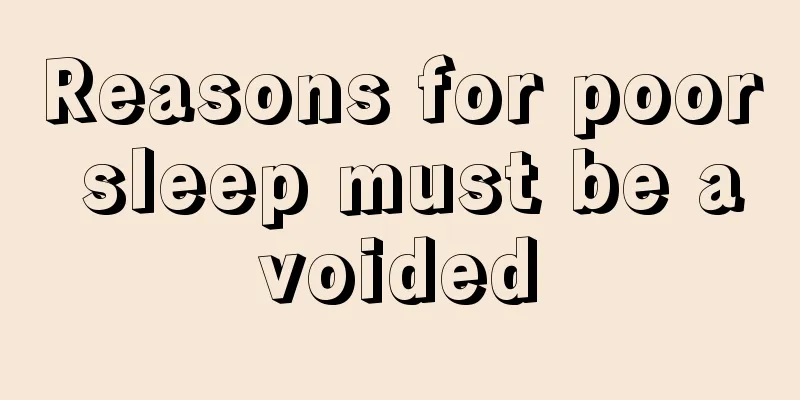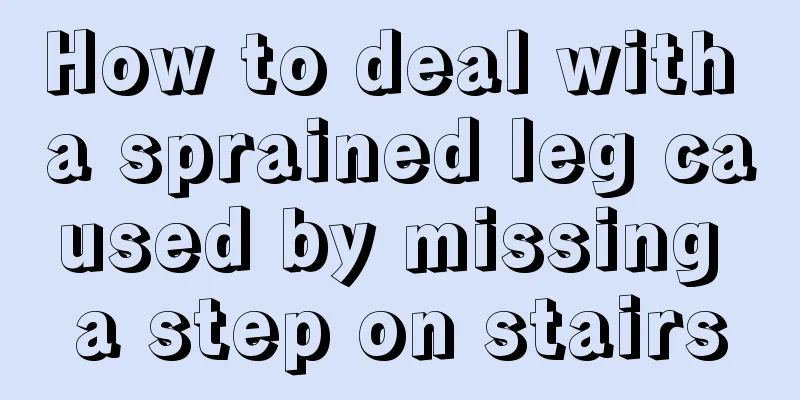My face hurts a little, what's going on?

|
The face is a very sensitive area, and any pain on the face will be very noticeable. Facial pain alone cannot determine the cause. We also need to consider the characteristics of the pain, as well as the pattern of the pain, how long it lasts, etc. There are many possible reasons for the pain on the face. We can first understand the factors in this regard, make judgments based on our own characteristics, and try to find the cause as soon as possible. So, what's going on with that little pain on my face? Let’s take a look below. Acute pulpitis: night pain, throbbing pain Acute pulpitis refers to acute inflammation of the dental pulp tissue. The source of infection is mainly from deep caries. The infection of the dental pulp can cause apical infection through the apical foramen. The clinical characteristics of the disease are rapid onset and severe pain. General analgesics are not effective and can develop into pulp necrosis in the later stage. This pain is usually spontaneous and paroxysmal, with a short duration in the early stage and a long relief period, and a long duration in the late stage, which can last up to a whole day. When the inflamed dental pulp becomes purulent, the affected tooth will have throbbing pain. The pain often occurs at night and is aggravated by thermal stimulation. When the pain occurs, most patients cannot clearly point out the affected tooth. The pain is radiating or referred, often radiating along the distribution area of the second or third branch of the trigeminal nerve to the upper and mandibular teeth on the same side of the affected tooth or to the head, temporal, and face. Facial pain caused by temporomandibular joint disorder has three clinical characteristics: first, joint pain; second, popping noises from the joints; and third, limited mouth opening, i.e. the inability to open the mouth. The pain is mostly in the joint area or around the joints. It hurts when you open your mouth, or the pain worsens. Some patients may also experience non-specific symptoms such as tinnitus, headache, paresthesia, and dizziness. Facial pain caused by temporomandibular arthritis includes local joint pain, ear pain, headache, bruises and pain when chewing, and is accompanied by pain in various muscles. Trigeminal neuralgia: sudden onset, severe pain Another disease that causes facial pain is trigeminal neuralgia, which is also one of the most easily overlooked causes of facial pain. Trigeminal neuralgia is one of the most common maxillofacial nerve diseases, with recurrent paroxysmal severe pain in the trigeminal nerve distribution area on one side of the face as the main manifestation. This kind of "face pain" mainly occurs in the distribution area of the trigeminal nerve in the face. Since the pain occurs in the teeth and face, it is easy to be confused with toothache. But in fact, the characteristics of trigeminal neuralgia are very obvious, that is, sudden onset and sudden cessation. The pain feels like lightning, knife cutting, and burning. It is a stubborn, unbearable and severe pain. This kind of "face pain" often causes paroxysmal severe pain when talking, washing the face, brushing teeth, or when a breeze blows on the face, or even when walking. Moreover, each pain attack only lasts for a few seconds or minutes, the pain occurs periodically, and the intervals between attacks are the same as those of normal people. In the early stage of the disease, the number of attacks is relatively small and the intervals between attacks are long, ranging from several minutes to several hours. As the disease progresses, the attacks become more frequent, the intervals between attacks gradually shorten, and the pain gradually becomes more severe. Unlike acute pulpitis, this type of facial pain occurs less frequently at night. At the same time, the face on the painful side may show spasm, and the expression may show tension and anxiety. Sanlu brain experts remind: If you experience "facial pain" symptoms, you need to go to the neurosurgery or neurology department of a regular hospital for systematic examination and treatment. |
>>: Red rashes all over the body
Recommend
How to make leek and cucumber dumpling filling
The combination of leek and cucumber is quite com...
Is eardrum perforation surgery risky?
Eardrum perforation has a great impact on the pat...
What are the precautions for intravenous potassium supplementation
Potassium is an indispensable trace element in th...
Is there any connection between mosquito bites and blood type?
In summer, there will be many mosquitoes, and the...
Skin cancer patients should pay attention to early symptoms
According to a survey, skin cancer is a common tu...
TCM Syndrome Differentiation and Treatment of Type 2 Advanced Pancreatic Cancer
Pancreatic cancer is a common pancreatic malignan...
Three early signs of gallbladder cancer
There are no obvious symptoms in the early stage ...
What is the function of cab cellulose?
The so-called cab cellulose actually refers to ce...
What should I pay attention to when cleaning the black lumps in my belly button
In life, we may accidentally find black lumps in ...
How do breast cancer patients exercise?
How can breast cancer patients exercise? Nowadays...
What is the effective treatment for motion sickness?
I believe many people have experienced motion sic...
Why does powder float after applying BB cream
BB is actually the abbreviation of Blemish Balm, ...
What foods are good for men to nourish their kidneys?
The kidneys are the source of all vitality. As th...
Does cervical cancer cause uterine malformation?
Cervical cancer itself does not directly cause ut...
Which department should I go to for lymphoma
Lymphoma is a notorious cancer that kills many pe...









